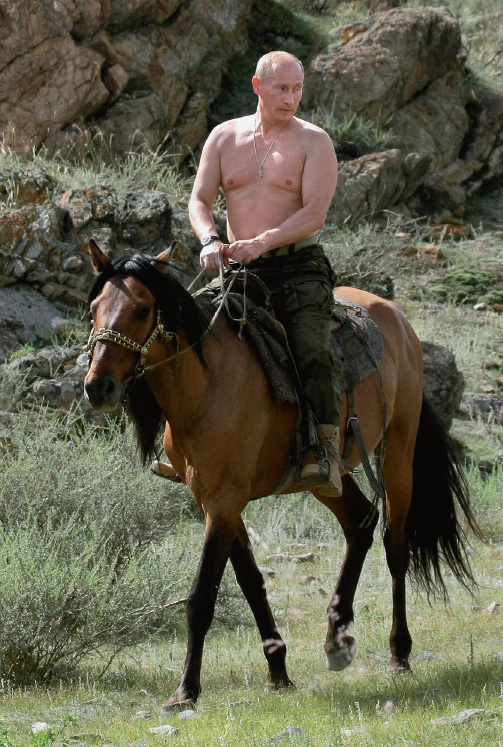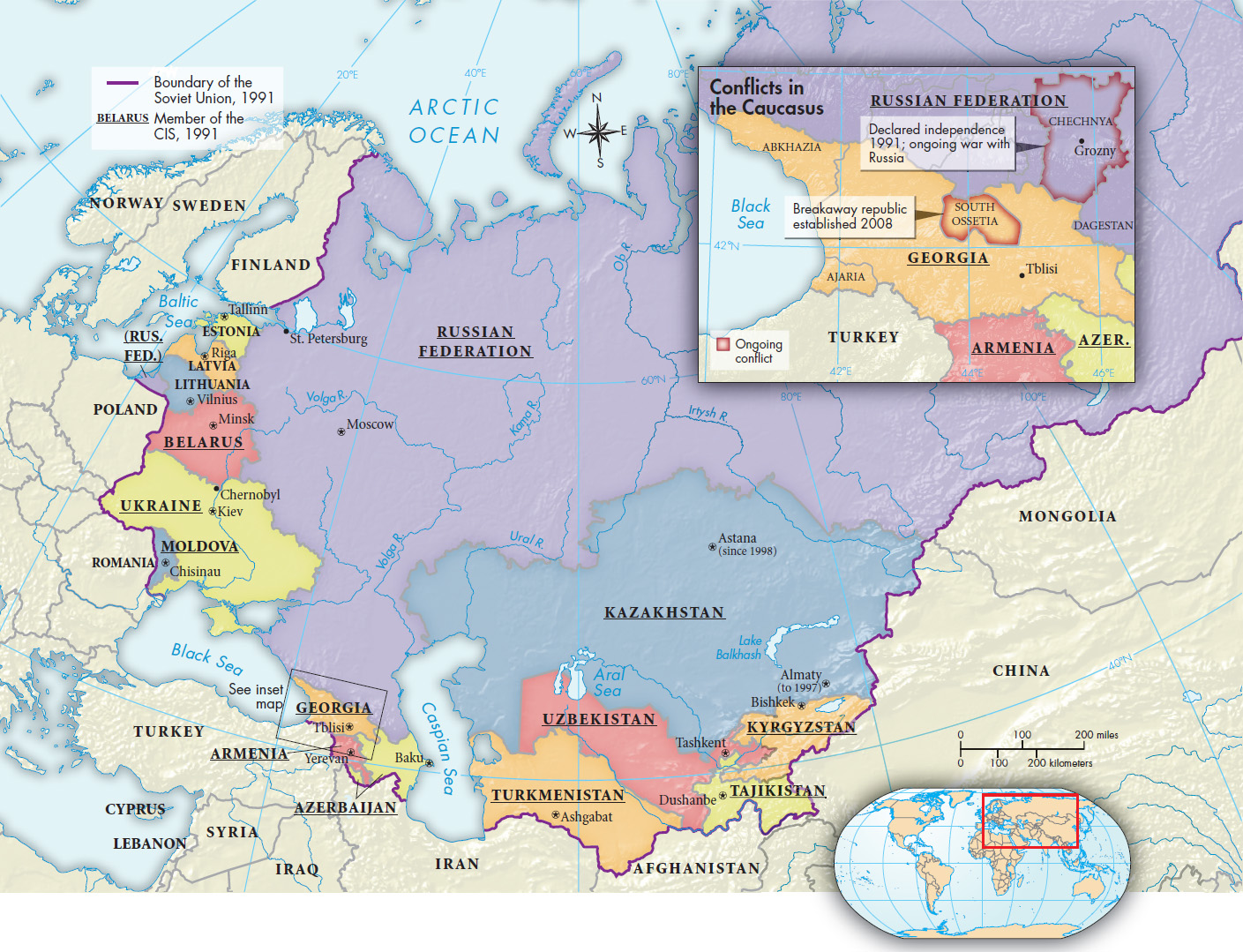Russian Revival Under Vladimir Putin

This widespread disillusionment set the stage for the “managed democracy” of Vladimir Putin (POO-tihn) (b. 1952). First elected president as Yeltsin’s chosen successor in 2000, Putin won re-election in a landslide in March 2004, and, after a four-year stint as prime minister, returned to the presidency in 2012. An officer in the secret police in the Communist era, Putin maintained relatively liberal economic policies but re-established semi-authoritarian political rule. Proponents of liberal democracy were in retreat, while conservative Russian intellectuals were on the offensive, arguing that free markets required strong political rule to control corruption and prevent chaos. Putin clamped down on the excesses of the Oligarchs, lowered corporate and business taxes, and re-established some government control over key industries.
This combination of autocratic politics and economic reform — aided greatly by high world prices for oil and natural gas, Russia’s most important exports — led to a decade of strong economic growth. Russia enjoyed over nine years of economic expansion, encouraging the growth of a new middle class. In 2008, however, the global financial crisis and a rapid drop in the price of oil caused a downturn, and the Russian stock market collapsed. The government initiated a $200 billion rescue plan, and the economy stabilized and returned to modest growth in 2010.
During his first two terms as president, Putin’s domestic and foreign policies proved immensely popular with a majority of Russians. His housing, education, and health-care reforms significantly improved living standards. In foreign relations, Putin championed an assertive anti-Western Russian nationalism. He took a forceful stand against the expansion of NATO in the former East Bloc and regularly challenged U.S. and NATO foreign policy goals, as in the Syrian civil war that began in 2011 (see “Turmoil in the Muslim World”). (See “Primary Source 30.1: President Putin on Global Security.”) Putin expressed pride in the accomplishments of the Soviet Union and downplayed the abuses of the Stalinist system. In addition, the Russian president centralized power in the Kremlin, increased military spending, and expanded the secret police. Putin’s carefully crafted manly image and his forceful international diplomacy soothed the country’s injured pride and symbolized its national revival.
Putin’s government moved decisively to limit political opposition. The 2003 arrest and imprisonment for tax evasion and fraud of the corrupt oil billionaire Mikhail Khodorkovsky, an Oligarch who had openly supported opposition parties, showed early in his rule that Putin and his United Russia Party would use state powers to stifle dissent. Though the Russian constitution guarantees freedom of the press, the government cracked down on the independent media. Using a variety of tactics, officials and pro-government businessmen influenced news reports and intimidated critical journalists. The suspicious murder in 2006 of journalist Anna Politkovskaya, a prominent critic of the government’s human rights abuses and its war in Chechnya, reinforced Western worries that the country was returning to Soviet-style press censorship.
Putin also took an aggressive and at times interventionist stance toward the Commonwealth of Independent States, a loose confederation of most of the former Soviet republics (Map 30.1). Conflict has been particularly intense in the oil-rich Caucasus, where an unstable combination of nationalist separatism and ethnic and religious tensions challenges Russian dominance. Since the breakup of the Soviet Union, Russian troops have repeatedly invaded Chechnya (CHEHCH-nyuh), a tiny Muslim republic with 1 million inhabitants on Russia’s southern border that declared its independence in 1991.

Despite nominal Russian control over Chechnya, the cost of the conflict has been high. Thousands on both sides have lost their lives, and both sides have committed serious human rights abuses. Moscow declared an end to military operations in April 2009, but Chechen insurgents, inspired by nationalism and Islamic radicalism, continued to fight. Russia also intervened in the independent state of Georgia, which won independence when the Soviet Union collapsed in 1991. Russian troops invaded Georgia in 2008 to support a separatist movement in South Ossetia (ah-SEE-shuh), which eventually established a breakaway independent republic recognized only by Russia and a handful of small states.
Putin stepped down when his term limits expired in 2008. His handpicked successor, Dimitri Medvedev (mehd-VEHD-yehf) (b. 1965), easily won election that year and then appointed Putin prime minister, leading observers to believe that the former president was still the dominant figure. This suspicion was confirmed when Putin won the presidential election of March 2012 with over 60 percent of the vote. International observers agreed that the election itself was democratic, but reported irregularities during the vote-counting process. Some fifteen thousand protesters marched through downtown Moscow to protest election fraud and the authoritarian aspects of Putin’s rule, and demonstrations also accompanied the president’s inauguration that May.
Tensions between political centralization and openness continue to define Russia’s difficult road away from communism. On one hand, Putin’s return to the presidency seemed to reinforce Russia’s system of authoritarian central control. On the other, the fact that mass assemblies and marches against the president took place with relatively little repression attests to some degree of political openness and new limits on Russian state power in the twenty-first century.